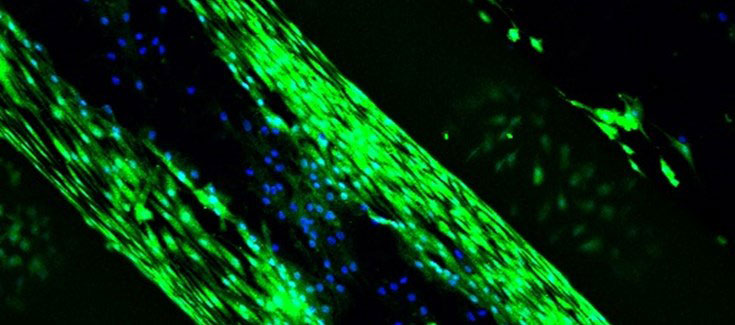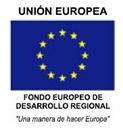3DBio-impression systems and bio-ink for the regeneration of cartilage and bone
The Nanobiocel Group, coordinator of Unit 10 of NANBIOSIS participate in a public-private collaborative project to reach clinical application in the regeneration of osteochondral lesions, which mainly affect the knee and ankle joints.
The new project is funded by the Challenges-Collaboration program of the Ministry of Economy, Industry and Competitiveness. It has a budget of 691,000 euros for 3 years and the participation of two Spanish companies (Bioibérica and REGEMAT3D), the Higher Council for Scientific Research (CSIC), the University of Granada, the Center for Biomedical Research in Network Bioengineering, Biomaterials and Nanomedicine (CIBER -BBN) and its ICTS NANBIOSIS.
The companies and research groups participating in this project will work in the manufacture of three-dimensional mesh pieces or scaffolding designed with 3D bio-printing systems. These pieces will be fed with cells that make it possible to generate tissues in vitro to regenerate lesions. The ultimate goal is the development of new bio-inks (in which meshes and cells are combined) that are implanted in bone and cartilage.
In addition, the high prevalence of joint injuries makes them very interesting as the first application of bio-printing, with a view to its use in clinical practice”, Explains Patricia Gálvez, director of the Advanced Therapies Unit of Bioibérica, the coordinating company of this project.
A worldwide pioneering project
The company REGEMAT3D has developed a system of devices for bio-pioneering worldwide. This system, intended for research groups in its initial version, allows bio-printing three-dimensional meshes loaded with various cell types (chondrocytes and mesenchymal stem cells) for the regeneration of cartilage. This type of fabric has a number of advantages compared to others because of its relative simplicity, and above all because it is not necessary that a previous cultivation has been carried out.
From the scientific point of view, there are several improvements to be made in the area of 3D bio-printing to make this technology so promising can be used in the clinic with guarantees of success. It is necessary to develop new biomaterials for meshes that mimic biological materials with similar mechanical and chemical properties. These biomaterials have to be printable and their parameters have to be controllable. It is also necessary to access a well characterized and reproducible source of cells to feed these pieces that can be obtained in large quantities to be able to repair wide areas of tissue.
For this task, they have joined forces REGEMAT3D, Bioibérica, the Nanobiocel Group of CIBER-BBN, coordinator of Unit 10 of NANBIOSIS, the research group CTS-205 of the Department of Pharmacy and Pharmaceutical Technology and the research group CTS-963 of Advanced Therapies: Differentiation, Regeneration and Cancer, both belonging to the University of Granada and the Biomaterials Group of the Polymer Science and Technology Institute of CSIC, also belonging to CIBER-BBN.
All these companies and research groups contribute with their know how in bio-printing to the development of pharmaceutical products for the treatment of joint injuries, cellular therapies and biomaterials, in a way that constitutes a multidisciplinary consortium with wide guarantees of success.
“Promover el desarrollo tecnológico, la innovación y la investigación de calidad”











